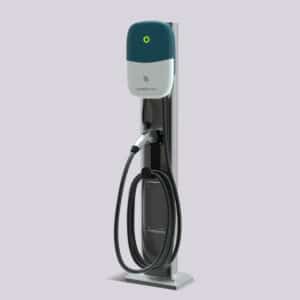- Understanding EV Demand
- Assessing Charging Station Viability
- Market Research and Analysis
- Infrastructure Considerations
- Regulatory and Compliance Factors
- Choosing the Right Charging Equipment
- Partnerships and Collaboration
- Marketing and Promotion
- Maintenance and Customer Support
- Monitoring and Optimization
- Conclusion
With the rapid growth of electric vehicles (EVs) on the roads, businesses are increasingly looking into the viability of installing EV charging stations at their facilities. However, before making this investment, it’s crucial to evaluate the actual demand for EV charging and assess the viability of such stations at your specific location. This article delves into the essential steps and considerations involved in evaluating EV demand and charging station viability at your facility.
Understanding EV Demand
The first step in evaluating EV demand is understanding what drives it. EV adoption is influenced by various factors, including government incentives, environmental concerns, technological advancements, and consumer preferences. Conducting market research to gauge the level of interest and adoption of EVs in your area is fundamental. This research can involve analyzing EV sales trends, customer surveys, and studying the EV infrastructure landscape.
Assessing Charging Station Viability
Once you have a grasp of the EV demand landscape, it’s time to assess the viability of installing charging stations at your facility. Numerous factors contribute to this evaluation:
- Location: Consider the location of your facility in relation to EV drivers’ commuting routes or popular destinations. Convenient access to charging stations can attract more EV customers.
- Customer Demographics: Understand your customer base and their propensity to own or use EVs. Demographic factors such as income level, environmental consciousness, and tech-savviness can influence EV adoption rates.
- Existing Infrastructure: Evaluate your facility’s electrical infrastructure to determine if it can support EV charging stations. Assess the capacity, compatibility with charging equipment, and potential need for upgrades.
- Parking Availability: Adequate parking spaces dedicated to EV charging are essential. Ensure there’s enough space for EV drivers to park and charge their vehicles comfortably.
- ROI Analysis: Conduct a thorough return on investment (ROI) analysis to understand the financial implications of installing charging stations. Consider installation costs, potential revenue from charging fees, additional business opportunities (e.g., increased foot traffic), and long-term benefits.
Market Research and Analysis
Market research plays a crucial role in evaluating EV demand and charging station viability. Look into the competition to understand what charging services are already available in your area. Analyze their pricing strategies, user experience, customer feedback, and any unique offerings. This analysis can help you identify gaps in the market or areas where you can differentiate your charging services.
Infrastructure Considerations
Assessing your facility’s infrastructure is a critical aspect of evaluating charging station viability. Determine if your electrical system can handle the additional load from EV charging stations. Consult with electrical engineers or experts to assess compatibility, capacity, and any necessary upgrades. Factor in costs for installation, equipment, permits, and regulatory compliance.
Regulatory and Compliance Factors
Before proceeding with installation, familiarize yourself with local regulations, permits, and zoning requirements related to EV charging stations. Ensure compliance with safety standards, ADA (Americans with Disabilities Act) requirements, and environmental regulations. Obtain necessary permits and approvals from relevant authorities to avoid legal issues down the line.
Choosing the Right Charging Equipment
Selecting the appropriate charging equipment is crucial for providing efficient and reliable charging services. Understand the different types of chargers available—Level 1, Level 2, and DC fast chargers—and their charging speeds, compatibility with EV models, and user experience. Consider factors like the charging time required, convenience for customers, and future-proofing your infrastructure to accommodate evolving EV technologies.
Partnerships and Collaboration
Collaboration with EV manufacturers, utility companies, and charging network providers can enhance the viability and success of your charging stations. Explore partnership opportunities to access incentives, technical support, and marketing resources. Consider joining charging networks or platforms to expand your reach and attract more EV customers. Collaborative efforts can also lead to innovative solutions and improved customer experiences.
Marketing and Promotion
Develop a comprehensive marketing strategy to promote your EV charging services to existing and potential customers. Highlight the benefits of charging at your facility, such as convenience, reliability, sustainability, and cost-effectiveness. Utilize digital marketing channels, signage, promotional offers, and partnerships with local EV clubs or organizations to raise awareness and attract EV drivers.
Maintenance and Customer Support
Ensure proper maintenance and ongoing support for your charging stations. Implement regular inspection, cleaning, and maintenance schedules to keep the equipment in optimal condition. Provide clear instructions, signage, and user guides for EV drivers using your charging stations. Establish customer support channels (e.g., helpline, online chat, email) to address any issues, inquiries, or feedback promptly.
Monitoring and Optimization
Implement monitoring systems to track usage, energy consumption, revenue, and customer feedback related to your charging stations. Use data analytics to gain insights into charging patterns, peak usage times, pricing strategies, and customer behaviors. Continuously optimize your charging services based on these insights to improve efficiency, reliability, and customer satisfaction.
Conclusion
In conclusion, evaluating EV demand and charging station viability at your facility requires a thorough and strategic approach. By understanding EV demand drivers, assessing infrastructure readiness, complying with regulations, choosing the right equipment, fostering partnerships, implementing effective marketing, providing maintenance and support, and leveraging data analytics, you can create a successful and sustainable EV charging ecosystem. Investing in EV charging infrastructure not only meets the growing demand for sustainable transportation but also enhances your facility’s appeal, customer experience, and revenue opportunities.
Featured Products
-
 Add To Cart Select options
Add To Cart Select options
Nick Zamanov is a head of sales and business development at Cyber Switching. He is an expert in EV infrastructure space and he is an EV enthusiast since 2012, Since then Nick strongly believed that electric vehicles would eventually replace Internal Combustion Engine (ICE) cars.



